#bird anatomy
Photo
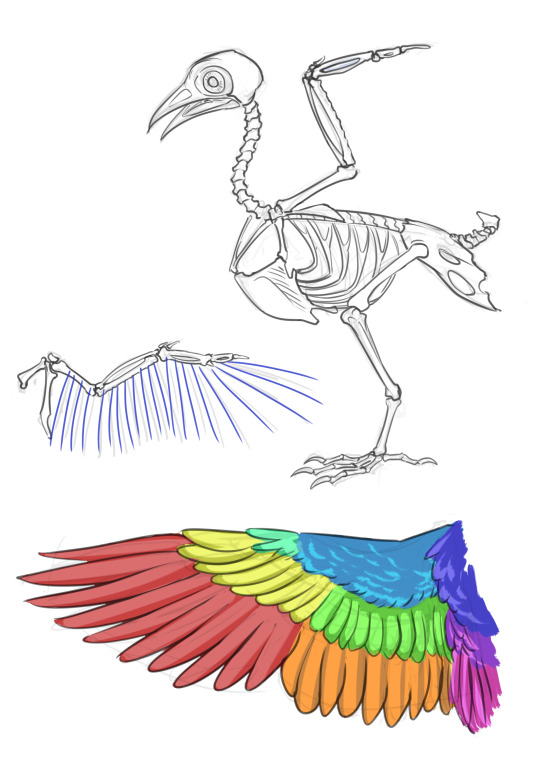

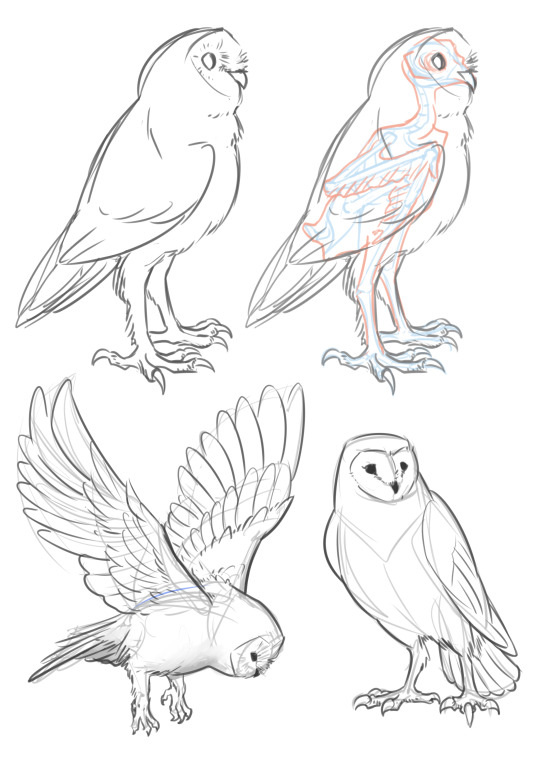
Borb
(Schoolwork)
#original art#art study#bird#bird anatomy#bird drawing#sketches#snake's art#It'd be a shame if I messed up somehow#since I have real bird bones to reference off of
521 notes
·
View notes
Text
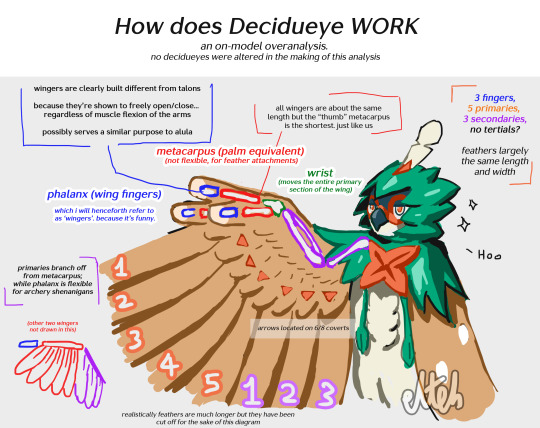
decidueye's anatomy has been bugging me so i decided to overanalyze it
disclaimer: this is in no way a 100% foolproof design
#pokemon#decidueye#rowlet#speculative biology#speculative worldbuilding#bird anatomy#wing anatomy#alola#pokemon sun and moon
259 notes
·
View notes
Text
Guys, my hc is that goetia have like proper bird anatomy down there. Which makes Stolas (at least in bird form) a forced bottom. But then I thought about Ozzie, and Fizzarolli saying Ozzie‘d have like the biggest thing ever (which could be a lie, but I doubt it). So I had to research a little.

Ozzie is a rooster, isn’t he?
‘Something which looks a bit like a penis, but doesn’t actually do anything useful.’
That’s like the funniest shit I’ve read in a while, but that could just be my ace showing or my not wanting to be a parent or whatev.
Also if not useful also means it doesn’t get hard it’s even more logical that he makes dildos and stuff.
#never thought about how useful a penis is#ozzies cock is useless#research didn’t ruin my headcanon#research improved my headcanon#bird anatomy#Stolas#helluva boss#helluva boss stolas#helluva boss headcanon#helluva boss asmodeus#stolitz#fizzmodeus
56 notes
·
View notes
Note
Howdy there, i really like your bird drawing tutorial, but i wanna know if this would work for flightless birds like ostrichs or other extinct flightless birds, if not could you send some tips on how to draw them?
Hi! I was thinking about mentioning flightless birds in the tutorial, but I decided I didn't want to open that can of worms, since there was already so much to talk about. But in short, some things in the tutorial still apply to flightless birds, others less so.
Especially the parts about feathers don't apply as well to flightless birds, because the general anatomy of the wing has evolved to maximize flight efficiency. In flightless birds, the general bone structure and the shape of the featherless wing is still similar, but since the wings aren't used for flying, the feathers can be completely different.
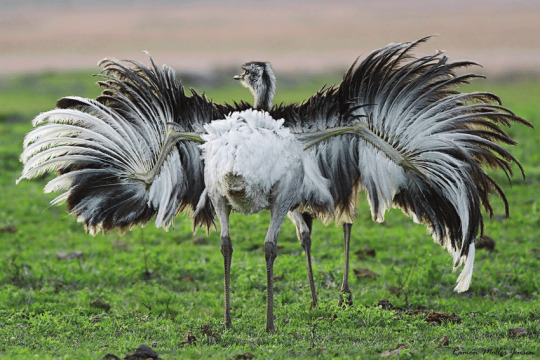
Ostriches use their wing feathers for social and sexual displays instead, so their wing feathers are big, poofy and less "orderly". In other flightless birds like emus and kiwis, the wing is very tiny and the feathers on the wings are very similar to their general body feathers, so they are basically invisible.
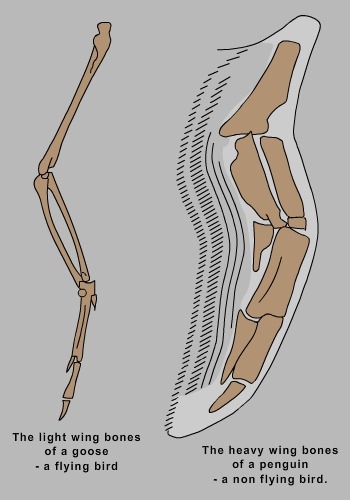
Penguin wings have evolved for swimming, so they are more robust. In general, flightless birds have heavier bones, since they don't need to reduce their weight in order to fly.
Flightless birds also don't have much of a tail, since the tail is the most useful for balancing flying.
While the leg anatomy is the same for flightless birds, the feet have usually lost a few toes, since there is no need to grab branches. Ostriches have only two toes.

That's just some general things that came to mind! I don't know of a good tutorial going into more detail than this, but if anyone has recommendations, feel free to share them!
9 notes
·
View notes
Text
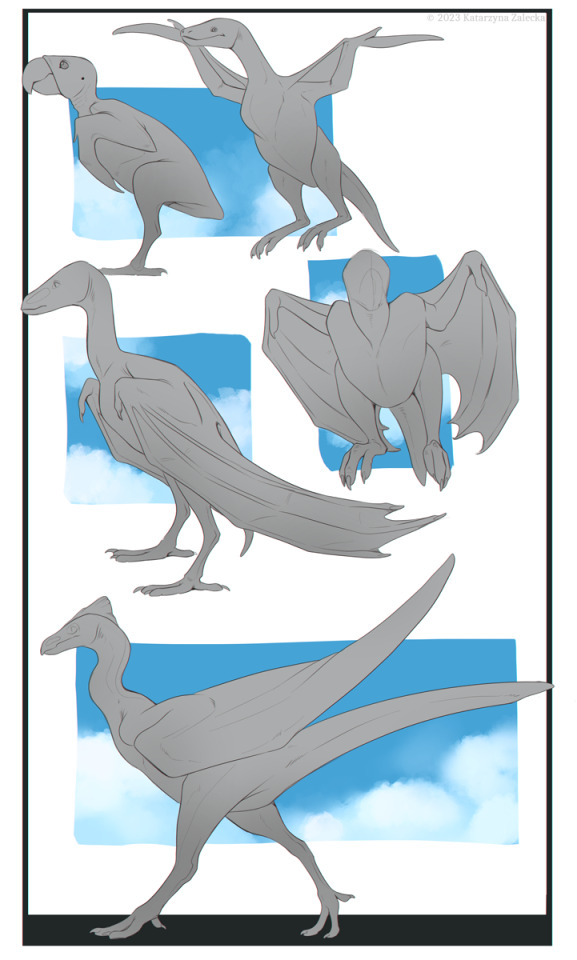
Silly studies based on bald birds
26 notes
·
View notes
Text
so i got a bit too into the anatomy again

please read my little anatomical notes 🥺
most of the bone structure and stuff is modelled after years of watching my chickens :)
might make another one of these for colors (once i figure those out) later
31 notes
·
View notes
Text
You: Heyy, so when birds tuck their necks in in a tight S-curve, how does their trachea not collapse from the sharp-angled vertebrae?
Me: I'm so glad you asked. The trachea and esophagus start just below the chin, like in mammals, but in most birds end up descending along the side of the vertebrae, not in front of it.
You: Is it the same side in every species? Or does it split in two and go on either side?
Me: I'm so glad you asked. There's only one of each, but there's no preferred side. In fact it doesn't follow the vertebral column at all-- it can slide around under the skin and change sides if the bird feels like it :)
You: I'm sorry I asked.
#bird anatomy#text#did a big bird anatomy research today#i hope i explained it right#now i know what was going on when my bird's neck was doing something funky- she was adjusting the side
9 notes
·
View notes
Text
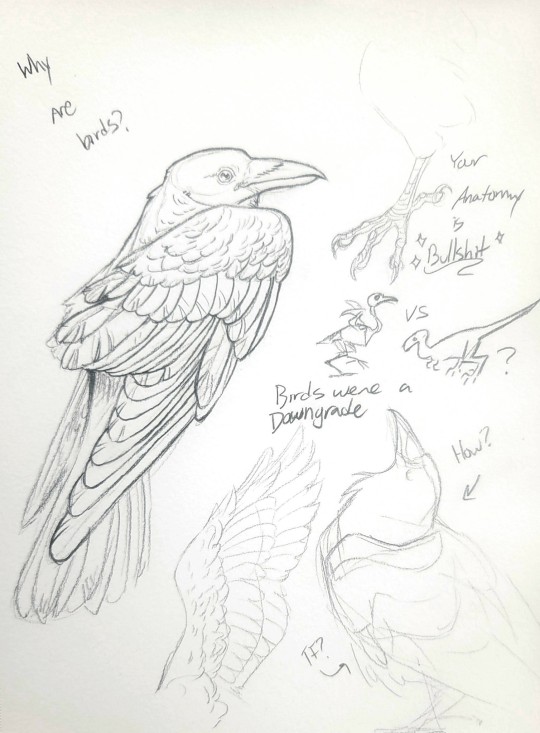
My frustration with birds
6 notes
·
View notes
Text

Got that full skeleton bird✨
4 notes
·
View notes
Photo
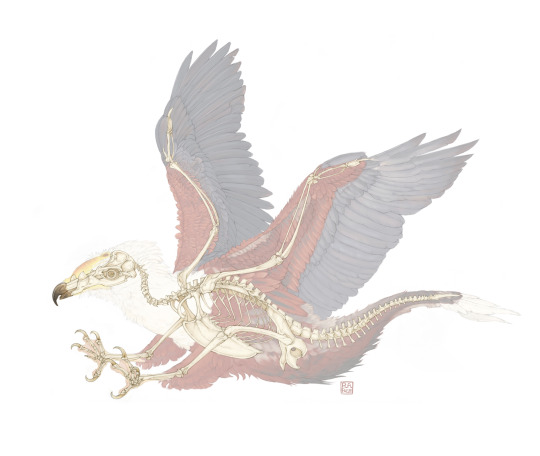
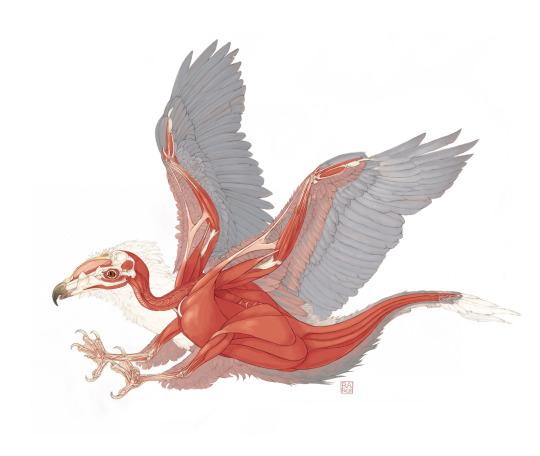
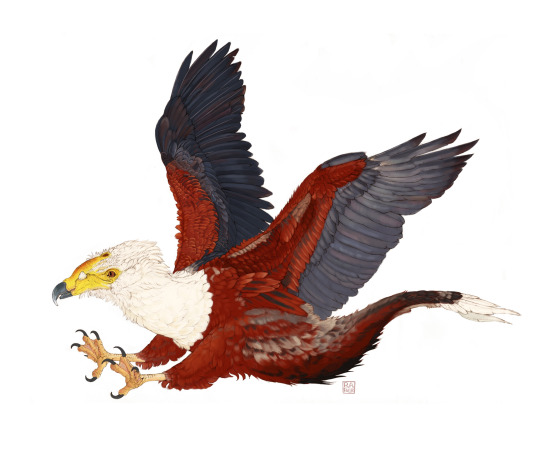
I haven’t done any anatomy stuff in a long time, so I decided to challenge myself with a creature design project combining eagle and whale anatomy. The result is what I call a wheagle - not the greatest name, but I started calling it that way back at the beginning of this project and it kind of stuck lol.
Since I’m still pretty rusty with anatomy, I gave this animal a fairly conservative and recognizable avian body - for the most part. The head, talons and tail are where the whale anatomy comes into play. The elongated skull displays telescoping (a reduced distance between the maxilla and occipital), resulting in dorsally located, blowhole-like nostrils. There is also a melon organ (pictured in the muscle study), a mass of tissue on the dorsal snout that aids in echolocation. The tusks were inspired by beaked whales, and are only found in the male animal. All in all the skull components are more mammalian than avian, despite the eagle-like beak and eyes.
The long, muscular tail was likewise inspired by cetacean muscle/locomotion, but ends in a pygostyle/tail fan that functions the same as in birds. There are five talons instead of four, but the outer fifth talon is basically vestigial - I only added it as a nod to the five “fingers” within whale flippers.
The wheagle is a fairly large piscivorous animal native to the South Pole. It feeds mainly on deep sea icefish, which it hunts using echolocation. Color scheme is inspired by African fish eagles. I’ll have some more studies of this creature’s anatomy to share later on; I definitely enjoyed getting back into animal anatomy and creature design!
#creature design#bird creature#creature anatomy#bird anatomy#whale anatomy#cetacean anatomy#creature art#concept art#skeleton#musculature#beaked whale#ziphiidae#eagle#african fish eagle#bones#muscles#anatomy#animal anatomy#digital art
12 notes
·
View notes
Photo
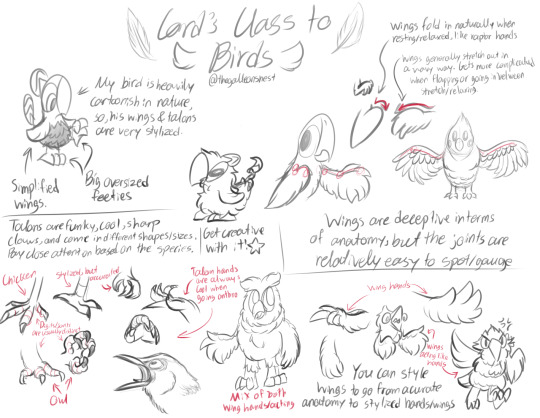
The drew this about a month for a friend to help them understand wings and talons more, and it turned into a whole class panel for like 30 minutes. Figured I share it here with ya’ll!
This is definitely more geared towards how I approach birds, but, the idea is still the same.
#Bird#Bird Study#Bird Anatomy#Art Lesson#Wings#Talons#Sketches#sketch page#Bird Art#Digital Art#My Art#TheGalleonsNest Art
14 notes
·
View notes
Text
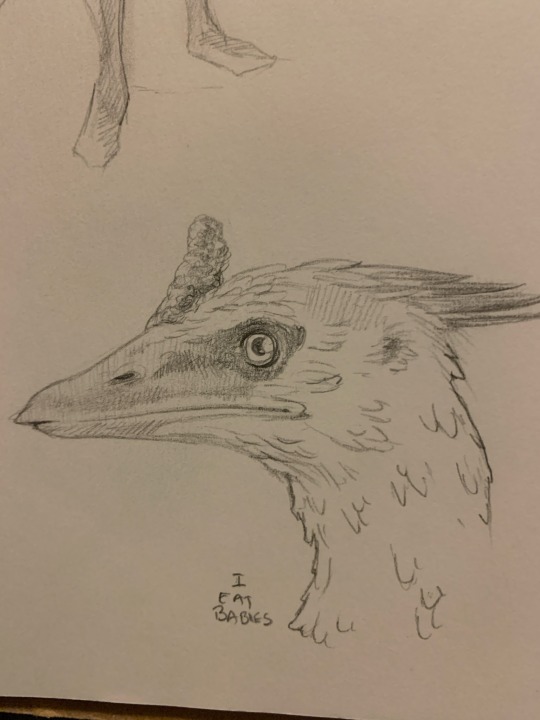
Found in an old sketchbook— probably 2004. I find all the speculation about dinosaurs having bird-like features so fascinating. I grew up with scaly dinos whose tails dragged on the ground. They were impressive monsters, but portrayed as ponderous and stupid. Not until Jurassic Park did we ever conceive if them being SO MUCH MORE INTRIGUING!
Like, consider a dino with soft tissue that wouldn’t preserve so well similar to a turkey’s snood. What if they had wattles? Or maybe even something weirder like the sage grouse’s big natchies..?
Their mating rituals could have been really impressive! That sort of stuff we can really only speculate on.
2 notes
·
View notes
Text


went down an anatomy rabbit hole and decided to revise my bird people notes
plenty of disbelief suspension and rule of cool, but it was also fun reading about all the different mechanisms of birds, bats and pterosaurs! had fun messing around
#speculative biology#worldbuilding#anatomy#bird anatomy#wing anatomy#oc#ocs#original characters#a70d#ordell
150 notes
·
View notes
Text
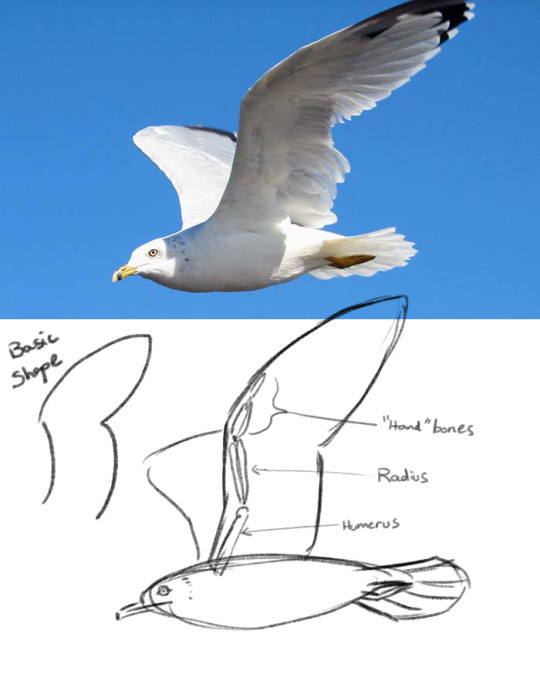
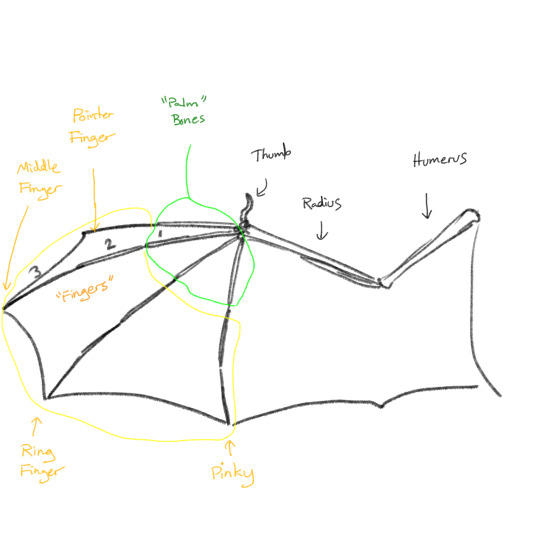
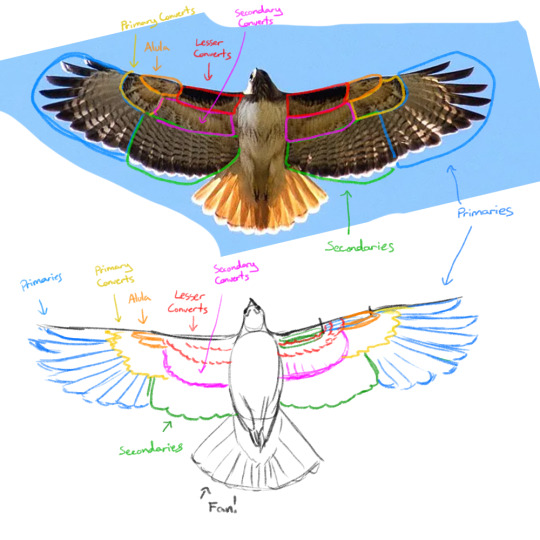

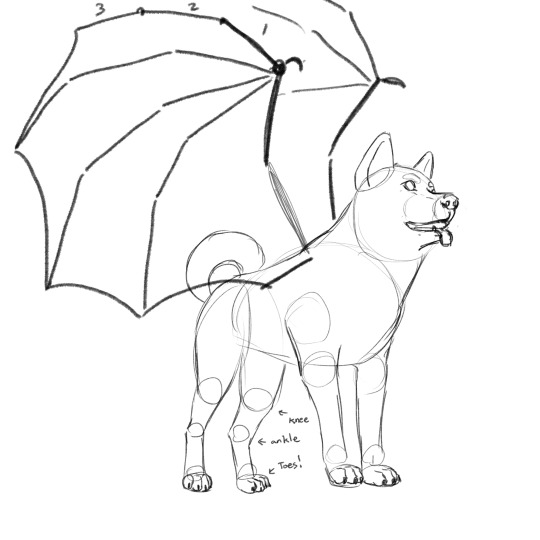
More teaching drawings :) This was a lesson on wing anatomy. And then of course the 9-yo requested an application to a pegasus and a bat-dog :'D
#wing#wings#wing anatomy#bird anatomy#sort of#bat wings#red tailed hawk#redtailed hawk#pegasus#bat dog#:'D
16 notes
·
View notes
Note
Hey! I saw your tutorial on birds and first off I wanna say... love it! Very useful
Second, I wanted to ask about bird legs because I have no clue what to search up....
For this, I'm talking more about the big birds with the bigger legs, like... secretary birds, cranes, herons...
I struggle with one main aspect with drawing the bird legs
And its the texture of the legs. I don't know what its called, or what to look up to figure it out on my own... is it like, scutes? Is that what birds have? Or is it scales? Any tips on how to interpret the pattern of the scales/scutes to depict them into art? Any tips on how the scale/scute covered flesh wrinkles and folds on itself?
You don't have to answer any of these but it would be really really appreciated... I struggle SO much with this 🥲
Even a point in the right direction on what to look up would be really useful... thank you, and i hope you have a nice day!
Hi! Sorry, I think I missed this question earlier, I only now saw it in my inbox. I'm glad you liked the tutorial! I honestly hadn't looked too deeply into the small details in bird feet before, so I'm not an expert, but I did some digging just now and maybe it will help you in the right direction.
It seems that scute is the correct term to use for the "scales" in bird feet (English isn't my first language so I didn't know about it either). The function very similarly to scales!
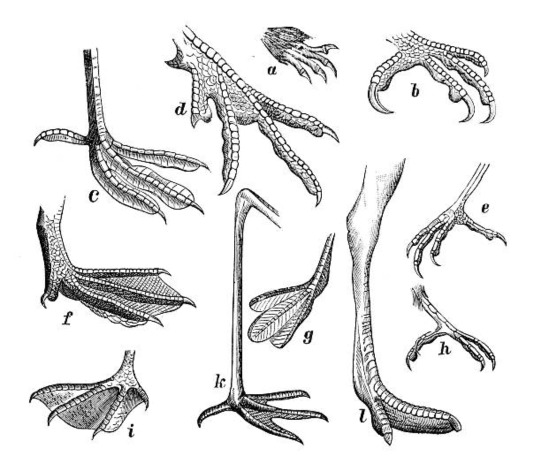
It seems like generally, bird feet have a row of large scutes on top of each toe. From below, the toes have these soft "foot pads" instead. In those areas, the skin may form tiny scutes, but those are usually hard to see so I wouldn't necessarily draw them in detail.
I also found this video which, starting from around 15 minute mark, goes over a lot of fine detail about bird feet from different angles, with some info about the scutes as well. Most of it definitely wasn't covered in my tutorial, so I recommend checking it out!
youtube
9 notes
·
View notes
Text
Does anyone know if geese are friend shaped
3 notes
·
View notes